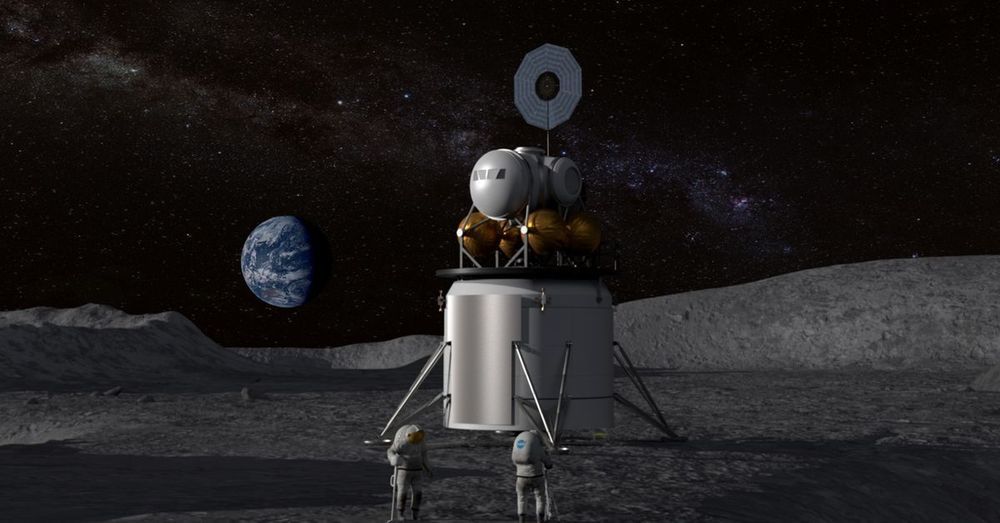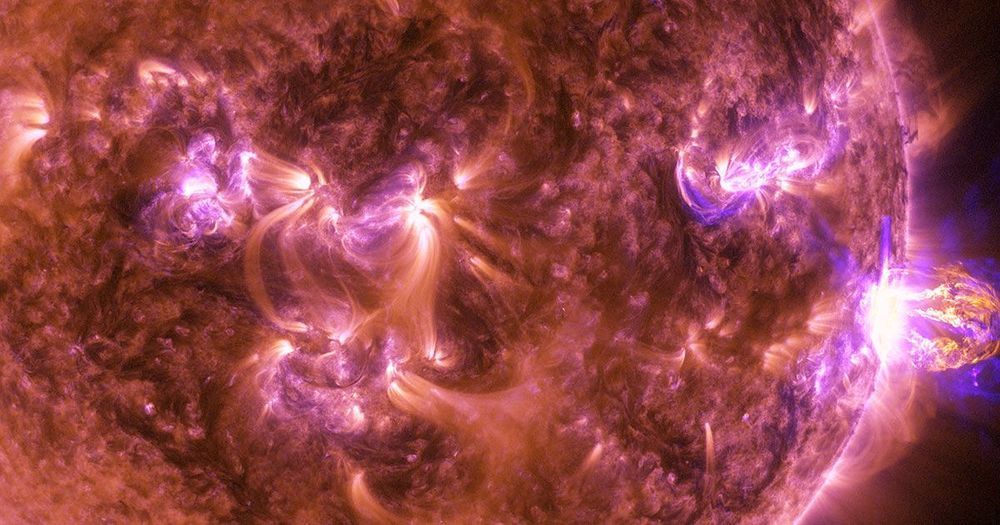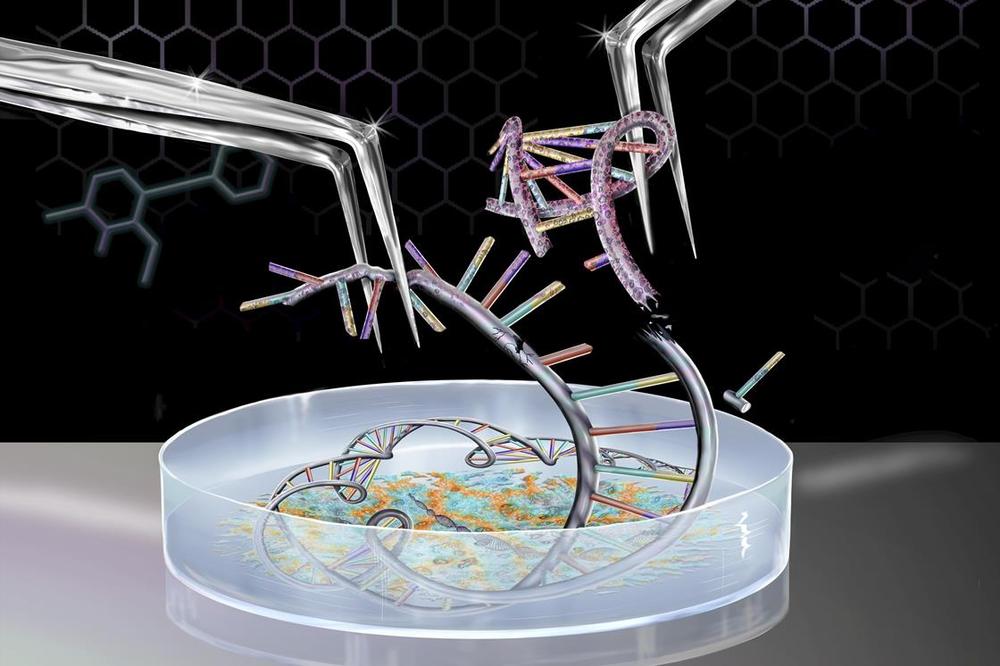Page 7637
Jul 30, 2019
This AI detects 11 types of emotions from a selfie
Posted by Genevieve Klien in categories: mobile phones, robotics/AI
The machine learning models that can detect our face and movements are now part of our daily lives with smartphone features like face unlocking and Animoji. However, those AI models can’t predict how we feel by looking at our face. That’s where EmoNet comes in.
Researchers from the University of Colorado and Duke University have developed the neural net that can accurately classify images in 11 emotional categories. To train the model, researchers used 2,187 videos that were clearly classified into 27 distinct emotion categories including anxiety, surprise, and sadness.
Jul 30, 2019
NASA to help SpaceX, Blue Origin, and more develop technologies for Moon and Mars travel
Posted by Genevieve Klien in category: space travel
As NASA forges ahead to the Moon — and eventually to Mars — the agency is hoping to get some help from the commercial space industry. Today, NASA announced new partnerships with various aerospace organizations, aimed at advancing technologies related to landing on other planets, navigating the lunar surface, transferring propellant in space, and more — all of which could be critical for future missions.
Ten companies now hold a total of 19 partnerships with NASA through the agency’s Announcement of Collaborative Opportunity initiative, or ACO. In October, NASA put out a call for proposals from the industry, asking them to detail different technologies they’d like to develop through the program. Now, the companies that have been selected will be given expertise and resources from various NASA centers to help mature these space technologies — at no cost to the companies themselves.
Jul 30, 2019
A deadly drug-resistant fungal infection is spreading fast, and doctors are sounding the alarm that ‘urgent’ action is needed
Posted by Genevieve Klien in category: biotech/medical
Candida auris, an invisible fungus, can live on surfaces for weeks. It affects people with weakened immune systems, often when they’re at hospitals.
Jul 30, 2019
Japan Approves Scientist’s Plan to Create World’s First Humanimals
Posted by Quinn Sena in categories: biotech/medical, government
For the first time, a government is supporting a plan to create animal embryos with human cells and bring them to term, resulting in a type of humanimal known as a human-animal chimera.
According to Nature, a committee from Japan’s science ministry signed off on a request by researchers to grow human pancreases in either rats or mice, the first such experiment to gain approval since a government ban was reversed earlier this year.
Jul 30, 2019
Transparent Aluminum — Star Trek Technology is now Real
Posted by Quinn Sena in categories: computing, military

ALON — Transparent Aluminum — is a ceramic composed of Aluminium, Oxygen and Nitrogen. Transparent Aluminum, was once pure science fiction, a technical term used in a Star Trek Movie from the 80’s.
In the movie Star Trek 4 The Voyage Home, Captain Kirk and his team, go back in time to acquire 2 whales from the past and transport them back to the future. Scotty needed some materials to make a holding tank for whales on his ship, but had no money to pay for the materials.
Continue reading “Transparent Aluminum — Star Trek Technology is now Real” »
Jul 30, 2019
Scientists Find One Billion Year Old Fungi, Earth’s Oldest
Posted by Quinn Sena in category: evolution
Scientists recently found one billion-year-old fungi in Canada, changing the way we view evolution and the timing of plants and animals here on Earth.
The fossilized specimen was collected in Canada’s Arctic by an international team and later identified to be the oldest fungi ever found, sitting somewhere between 900 million and 1 billion years old. The research, published recently in Nature, changes how we view eukaryotes colonizing the land.
The fossilized fungi were analyzed and researchers found the presence of chitin, a unique substance that is found on the cell walls of fungi. The specimen was then age dated using precise measurements of radioactive isotope ratios within the sample.
Jul 30, 2019
Sun’s Puzzling Plasma Recreated in a Laboratory
Posted by Quinn Sena in category: space travel
The sun’s magnetic fields trap hot plasmas in their loops, as seen in this ultraviolet image taken by NASA’s Solar Dynamics Observatory spacecraft. The solar flare seen on the right caused moderate radio blackouts on Earth.
Jul 30, 2019
Crispr treatment reverses muscular dystrophy in mice
Posted by Genevieve Klien in category: biotech/medical
Sciatic nerves isolated from untreated mice (left) show evidence of demyelination, which is improved upon treatment (right)
Researchers in Canada and Sweden have used a novel Crispr system to reverse harm caused by muscular dystrophy – usually thought to be permanent – in mice. Pre-clinical studies often treat animals early, before symptoms can be detected, says Ronald Cohn, senior scientist, president and chief executive officer of The Hospital for Sick Children in Toronto.
‘Our results now show that the therapeutic window may indeed be wider,’ Cohn tells Chemistry World. This is significant as all patients ‘are currently diagnosed at a time when symptoms are already presenting’, he adds. The researchers are now exploring partnerships with industry to work towards bringing the research into a clinical trial.
Jul 30, 2019
Origin of Mysterious Radioactive Cloud Over Europe Finally Traced to Source
Posted by Quinn Sena in category: futurism
In October 2017, European officials reported that a cloud of the radioactive isotope ruthenium-106 had mysteriously wafted over the continent. Its likely source was in the southern Ural Mountains, near Mayak, the Russian nuclear facility involved in a deadly nuclear disaster in 1957. Strangely, Russia at first denied — but then acknowledged — there had been a surge of radiation. However, it rejected the idea that the surge was the source of the cloud. Now, scientists report in a new PNAS paper that they’ve narrowed down where it actually came from.
There were a number of hypotheses to explain the source of the cloud, which spread over most of Europe and even reached Florida, Guadeloupe, Kuwait, and Mongolia in tiny amounts. Fortunately, it was deemed non-hazardous.
Russian officials denied that Mayak, one of the country’s largest nuclear facilities, was the source of the ruthenium. In November 2017, Rosatom, the state company that runs Russia’s nuclear industry, pointed to high radiation in Italy, Romania, and Ukraine, suggesting they might have been the source. And in December of that year, Russian officials, reasserting that Mayak was not the source of the cloud, suggested the cloud might have come from a satellite that had burned up in the atmosphere. Other hypotheses arose, but scientists have lacked the evidence to support or reject them until now.

















